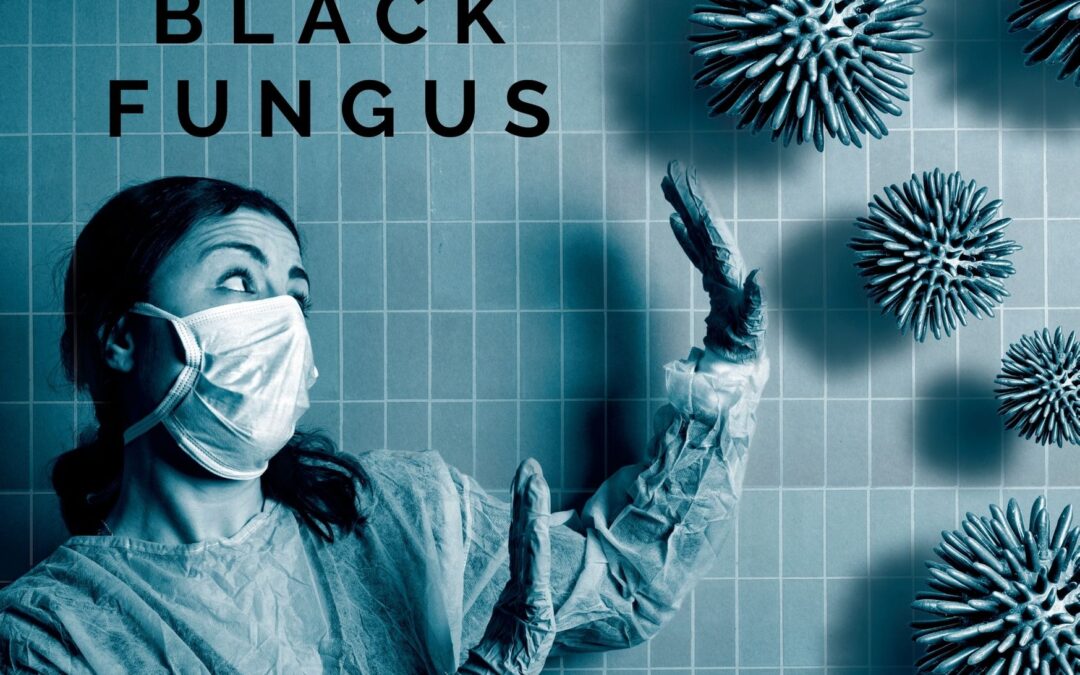
The infection they cause, mucormycosis—“black fungus,” colloquially—can infest the sinuses and bones of the face and invade the brain or cause patients to lose an eye. When it goes untreated—and treatment is prolonged and difficult—mucormycosis can kill up to half of those who contract it
What is black fungus?
As you might imagine, it is black. But it also has many other colors. And it doesn’t resemble the mushrooms people normally think of when they’re talking about fungus: Candida and other fungi that live in our noses. Instead, it’s a member of a family of fungi that live on and inside the plant and animal bodies of warm-blooded animals, and it infects warm-blooded animals who then spread the disease to other warm-blooded animals. Dr. Philippe Gauthier, a staff professor in Cornell University’s Department of Ecology and Evolutionary Biology, said that mertomycosis can develop when a person ingests fungal spores from something that infected them or from something they unknowingly came into contact with, such as an animal or contaminated soil.
What are the symptoms?
The infection is first noticed when a patient notices an area of redness around their nose or eyes, along with a rash that spreads over the face or ears. Patients are generally not aware that they have the infection because the symptoms are mild: The skin around the eyes is red and lumpy, and usually also a bit swollen. It may have a pungent odor, which comes from the infection. Skin around the nose is pale and sores may be oozing from the corner of the mouth. Itchy, red nodules are developing in the nasal and sinus area and spreading towards the ear. A headache, fever, and nausea often follow.
How is it spread?
Mucormycosis is spread through direct contact with infected soil or other small particles. The spores are able to grow throughout the nasal cavity and, when inhaled, enter the respiratory system through the eyes, sinuses or mouth and travel into the lungs. Once there, the spores become part of the air we breathe and are carried throughout the body, particularly into the muscles and soft tissue of the respiratory tract. How common is it? It is extremely rare. Even in the 30-odd known cases in the United States, the infection is rare enough that most of those patients did not get tested or were not diagnosed correctly, limiting the ability to gather data on the number of cases.
What are the treatments?
Mucormycosis can be treated with anti-fungal drugs such as rifampicin, penicillin and itraconazole. When the symptoms are caught early, antibiotics and surgery to remove the infected skull bone may be effective. But patients often have to be treated over an extended period. How is this related to using crayons? Patients of the disease often report that they developed the black disease when handling crayons or similar materials, or by handling goldfish, raw liver, and corn. But the disease is actually a real illness. There are around 1,800 cases of mucormycosis annually in the U.S. (though up to 25 percent of those cases are falsely reported, or undiagnosed).
Conclusion
I try to talk to patients about it as much as I can. I can’t blame a patient for avoiding a doctor or being in denial when they hear I have it. I can’t say it’s more common than it really is. I can’t claim I’m the only one that knows about it. I can say I’m lucky. I did all the right things to treat my condition and avoided complications. A lot of patients with my condition don’t get as lucky and may be hospitalized for treatment of the infection. Some die from the infection, and I’ve lost several friends to the infection over the last few years. It’s difficult to be open about it, but I also feel it’s important to keep it real. The bottom line is that people need to realize they are never alone in their battle with chronic illness.


